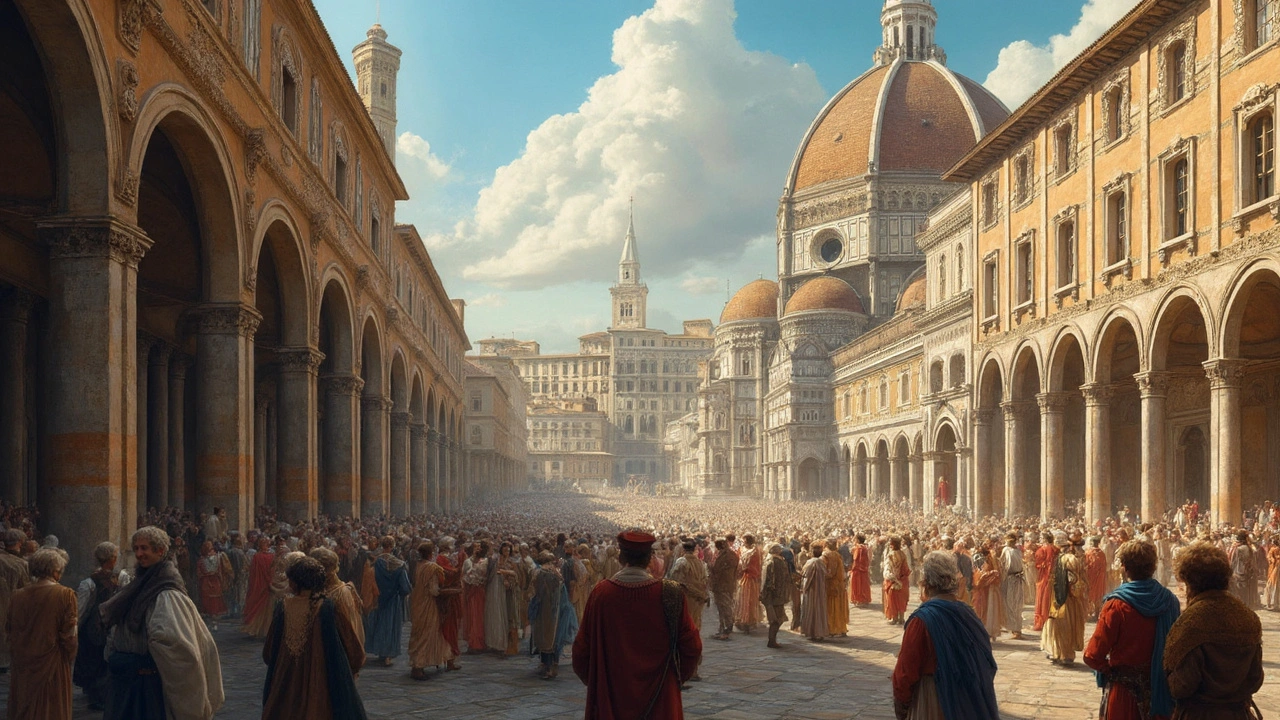How Power Shows in Art & Architecture
Power in buildings isn’t just about size. It’s about who the building speaks for, how it controls movement, and what emotions it pushes on people. Recognizing those signals makes cities easier to read and more interesting to visit.
Spotting power is simple if you know what to look for. First, scale and axis: grand stairs, long sightlines, and tall facades tell you a place was meant to impress. Second, entrances and thresholds: huge doors, porticos, and colonnades control who enters and how they arrive. Third, ornament and symbol: coats of arms, reliefs, and statues declare authority. Fourth, material and finish: marble, polished stone, and bronze signal wealth and permanence. Finally, placement matters: a building on a hill or at a crossroads moves it from local to civic power.
History records clear shifts in how power looks. Ancient Romans used concrete, arches, and aqueducts to convert engineering into control—roads, baths, and amphitheaters centralized administration and spectacle. Greek Revival borrowed temple forms to lend democratic ideals an authoritative face in courthouses and banks. Gothic cathedrals used height and light to channel spiritual power. Baroque and Beaux‑Arts pushed drama and symmetry to showcase monarchs and emergent states. In the twentieth century modernism stripped ornament to show corporate and technological confidence. Postmodernism answered with irony, signaling cultural power through reference and play.
Materials and engineering shape perceived power as much as style. A dome or vaulted space can make a crowd feel small and institutions look permanent. Steel frames and glass curtain walls do the opposite: they widen views, display activity, and advertise transparency. Yet transparency can be power too—think corporate headquarters where operations are on display as a form of brand authority. Even small features matter: the thickness of a door, the depth of a cornice, or the scale of a column changes the mood and authority of a space.
Power also lives in city planning and infrastructure. Monuments on axes, ceremonial avenues, and civic squares orchestrate gatherings and parades. Bridges and aqueducts reveal the power to move people and water. Control of circulation—who gets a direct route and who is diverted—expresses political decisions. Look at old maps and you can read where power used to sit: central plazas, elevated citadels, or riverfront palaces.
Want quick ways to read power when you travel? Stand back and compare building heights, note main entrances and their approach, check nearby monuments and statues, and watch how people move through spaces. Photograph facades at eye level and from a distance to capture both detail and composition. If a building’s materials look expensive from far away, it was meant to be seen.
If you’re curious to see examples, check articles on Roman engineering, Beaux‑Arts civic buildings, Baroque palaces, and modern corporate towers. Those pieces show concrete cases where design actively shaped influence, authority, and control in cities across history.
Start exploring the 'power' tag and next time you walk a city street, notice who benefits, who is excluded, and why too.

Renaissance Architecture: Power, Wealth, and the Stories Told in Stone
Renaissance architecture wasn't just about good looks—it was a playground for showing off power and business smarts. This article unpacks how popes, kings, and merchants used grand buildings to shout their importance to the world. You'll see what set Renaissance design apart from what came before, and why Florence and Rome became hotspots for this style. Discover quirky details inside famous mansions, plus tips on how to spot Renaissance touches when you travel or scroll social media.
Read more
The Power of Functionalism in Understanding Human Behavior
So, let's dive headfirst into the fascinating world of functionalism! Imagine it as a detective, peering into the whys and hows of our behavior. It's like a psychological magnifying glass, unravelling the purpose and impact of our actions. It's not all serious though, sometimes it's like figuring out why we can't resist those late-night snacks (guilty!). So, in a nutshell, functionalism is our Sherlock Holmes, helping us understand the mysteries of human behavior in a fun and insightful way!
Read more